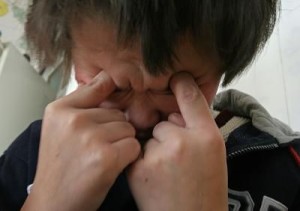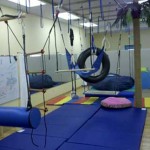It’s when a child has difficulty processing the world around them. What they see, hear, smell, touch, and taste isn’t recognized the same as you and me. The signals get mixed up and it can cause confusion, frustration, and even fright.
Sensory processing refers to the way the nervous system receives sensory messages and turns them into responses. Sometimes the sensory messages are too weak, too strong or get mixed up in a “traffic jam” resulting in disruption of daily routines and activities. The senses include the familiar sight, sounds, touch, taste and smell. They also include the less familiar senses sometimes referred to as the “hidden power senses”, the proprioception and vestibular senses which give us our awareness of speed, movement, pressure on our joints and muscles and the position of our bodies. The third hidden sense, interoception, refers to the sensations you feel from your internal organs such as the sensation that lets you know you need to go to the bathroom or when you have a stomach ache.
Watch this fun video to learn more






